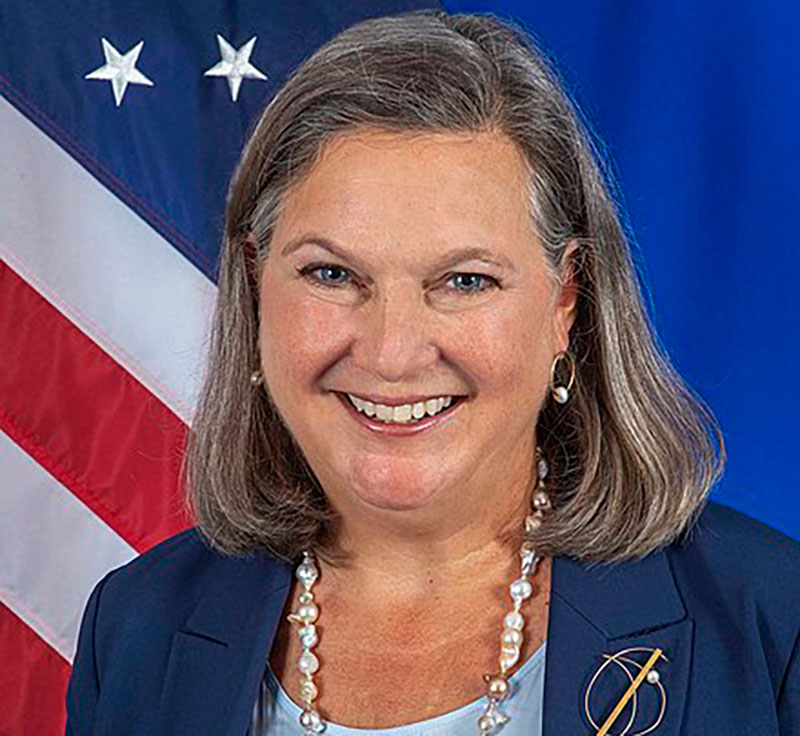Background the Media Never Told You

Vilnius is the capital of Lithuania, and Lithuania is a NATO nation on the southern coast of the Baltic Sea bordering Poland, Latvia, Belarus, and Russia (Kaliningrad, formerly part of German East Prussia). It has a Baltic Sea maritime border with Sweden. The population of Lithuania is only about 2.9 million, but from 1219 to 1569 its much extended borders formed the largest state in Europe. From 1569 to 1772 it was part of the Polish-Lithuanian Commonwealth. Western Ukraine was included in the territory of both those states. Lithuania was part of the Russian Empire from 1775 to 1918, when it became an independent republic. The Soviet Union attempted to invade Finland in November 1939 and forced Finland to cede 9 percent of its territory in March 1940. The Soviet Union occupied Lithuania, Latvia, and Estonia in June 1940. Lithuania was a Soviet Socialist Republic from 1944 to 1990. Vilnius has a population of about 600,000 and a metro-area of 900,000. It is one of the cultural capitals of Europe.
NATO (The North Atlantic Treaty Organization) will consist of 32 member nations when Sweden is officially approved by the Turkish National Assembly, probably in October of this year. Hungary has also opposed NATO membership for Sweden but has indicated it would not remain opposed if it was the only remaining opposition. The United States, Canada, and Turkey are the only members not fully within the traditional geographic bounds of Europe. There were only 12 member states included in NATO at its founding in 1949. Besides the Russian Federation, Belarus, Ireland, Switzerland, Austria, Serbia, and Moldavia are not NATO members. Ukraine is seeking NATO membership, and Georgia in the Caucus region of West Asia is a potential member. NATO was formed to prevent Soviet aggression in Europe. However, the Soviet Union and Soviet Communism collapsed in 1991. Nevertheless, NATO continued to expand, aiming at preventing the new Russian Federation from ever again becoming a serious military, economic, or leadership threat to U.S. UK, German, and French hegemonic power. However, the Russian Federation is not the Soviet Union, and has little political or economic similarity to the Soviet Union of 32 years ago.
The purpose of the Vilnius meeting was to rally support for and develop a plan for victory in the NATO proxy war against the Russian Federation in Ukraine. Also on the agenda were welcoming Sweden to NATO and to consider making Ukraine a member of NATO.
When nearly 150,000 Russian troops crossed the Ukrainian border beginning on February 24, 2022, there was an orchestrated outcry in the American media and most of the European media, that it was “an unprovoked invasion” of Ukraine. The term “unprovoked” was far from the truth. The United States and the UK had been actively provoking the Russian Bear by continuing to expand NATO membership and placing threatening numbers of military troops, equipment, aircraft, and missiles closer and closer to Russian borders and key defense systems. Shortening the warning time for nuclear threats on Moscow and other key Russian cities to less than 10 minutes is an existential threat to Russian national survival. To paraphrase an 1860 American Civil War quote: “If someone has a gun pressed to your chest, you cannot wait for him to shoot first, before you react.
Making Ukraine and Georgia members of NATO was first proposed at the NATO Bucharest Summit in April 2008, during the last year of President George W. Bush and his influential and super-hawkish Vice President Dick Cheney. In a February 2009 memo entitled “Nyet means Nyet,” (No means No), U.S. Ambassador to Moscow William Burns (now CIA Director) warned Washington that NATO membership for Ukraine was considered a unanimous and serious Red Line for Russian President Putin and Russian political and military leadership. This was ignored, and CIA propaganda demonizing Putin, which had begun after Putin’s criticism of the United States at the February 2007 Munich Security Conference, was accelerated, constantly comparing Putin to Hitler and alleging his ties to dozens of completely unsubstantiated crimes including attempted murder of political opponents. This is similar in many ways to the continuous stream of politically incubated allegations to smear President Trump, wreck his political future, and assure the continued dominance and funding of Deep State domestic and foreign policy.
According to Eric Zuesse, writing in Strategic Culture (September 5, 2016), in 2011, Secretary of State Hillary Clinton was tasked by President Obama to overthrow the democratically elected President of Ukraine, Viktor Yanukovych, and Syrian President Bashar-al-Assad in Syria by means of internal (‘color”) revolutions. Yanukovych, who was relatively pro-Russian, had been duly elected in 2010. But the Obama Administration wanted a pro-American leader oriented to European Union trade and especially Ukrainian membership in NATO. This culminated in the so-called Maidan Revolution on February 18-23, 2014, backed by the U.S. State Department, CIA, British MI6 Intelligence, and large sums of George Soros money. Vice President Joe Biden, Assistant Secretary of State Victoria Nuland, and now National Security Advisor Jake Sullivan were heavily involved in the success of the coup and future choices in Ukrainian leadership. Nuland’s February 7 telephone conversation with U.S. Ambassador to Ukraine Geoffrey Pyatt on the impending coup, however, was recorded by Russian intelligence. The recording and transcript can be found on the internet. Over 100 people were killed in violent riots, many by snipers suspected of running up the death toll to defame the Yanukovych regime, already demonized by the CIA and MI6.
Ukrainian is the native language of only about 60 percent of Ukrainians. Almost 40 percent identify with either Russian language or both Russian and Ukrainian. Self-described Russian ethnics amount to more than a third of Ukrainians, and their political sympathy runs well over 40 percent. More than half of these identify with the Moscow Patriarchate of the Ukrainian Orthodox Church. These are concentrated in Eastern and Southern Ukraine, where nine oblasts (states) have Russian ethnic majorities. The strongest Russian concentrations are in Donetsk (90%), Lugansk (89%), Crimea (78%) and Odessa (74%).
In March 2014, Crimea held a referendum, declared its independence from Ukraine, and asked to become part of Russia, which the Russians quickly obliged because of its huge Naval Base at Sevastopol. Donetsk and Lugansk followed the same pattern, but the Russians urged them to stay in Ukraine and seek pollical autonomy. In April, protest against the coup broke into open warfare in in the two Donbass oblasts of Donetsk and Lugansk, which declared themselves independent republics on April 27. At least 42 pro-Russian Yanukovych supporters were clubbed, shot, or burned to death on May 2 by pro-coup revolutionary mobs in Odessa.
Pro-American Petro Poroshenko was elected Ukrainian President in May 2014. Crimea, Lugansk, and most of Donetsk did not participate in the election. Poroshenko then proceeded to implement measures suppressing Russian language, culture, history, religious affiliations, and politics. He sent the Ukrainian Army into the Donbass to conduct an anti-terrorist campaign against dissent, which included artillery bombardment of civilian areas of Donetsk city. This has been ongoing, and Eva Bartlett has written extensively on this Ukrainian artillery bombardment of civilian areas of Donetsk, which includes shells containing clusters of “petal mines” that look like a flower or toy but maim or kill unwary civilians and children.
There was a brief cease-fire agreement by Ukraine, Russia, France, and Germany in Minsk, Belarus, on September 4 (Minsk I) but it did not last. Negotiations resulted in a Minsk II agreement in February 2015 calling for cease-fire, internationally monitored referenda on elections and autonomy for the Donbass Republics, and equal civil rights for Russian ethnicity, language, religion, and culture. Former German Prime Minister Angela Merkel has since admitted that Minsk II was only a delaying tactic to build up the Ukrainian Army for a renewed invasion of the Donbass and Crimea. Indeed, the Ukrainian Army was trained and equipped by NATO (mostly by U.S.) and became the second largest Army in European NATO, exceeded only by Turkey. With 400,000 active military and 250,000 reserves, the active Ukrainian Army was almost the size of the active Russian Army of only 500,000 and not much of a threat to NATO.
Putin realized by late 2021 that he had been betrayed on Minsk II, while Russians in the Donbass were still crying out to Russia and the Russian people for help. Minsk II had been agreed to and signed, but the Germans, French, and Ukrainians with American and British agreement never had any intentions of implementing them. On February 18, 2022, Ukrainian President Zelensky formerly rebuked the Minsk II agreement and substantially increased bombardment of downtown Donetsk. It had also become clear that the U.S. and British were using Ukraine as a battering ram to weaken Russia militarily and economically and force a regime change, replacing Putin with someone who could be manipulated to favor American interests and hegemonic power. Over 14,000 people were killed in the Donbass War prior to February 24, 2022. More than 4,000 were Russian ethnic civilians killed by Ukrainian artillery.
Hence Russia’s invasion of Ukraine on February 24, 2022, was far from unprovoked. In fact, the 2014 American-backed coup in Ukraine, the tremendous NATO buildup of the Ukrainian armed forces, exposing Russia to shorter range missile strikes, and the recently admitted objective of weakening Russian military and economic power and forcing Russian regime change make American and NATO claim to the high moral ground absurd. The fact that our proxy war against Russia is largely at the cost of Ukrainian blood, “fighting to the last Ukrainian” casts an even graver shadow. At least 200,000 Ukrainian soldiers have been killed. Douglas Macgregor is now estimating over 300,000. Ukraine’s prewar population without the Donbass and Crimea was about 37 million, and 10 million have fled to the West and do not intend to come back. Another 2 million have fled to Russia, leaving only 25 million. Macgregor believes the population may have fallen as low as 18 to 22 million. The United Nations estimated less than 9,000 civilian war deaths in Ukraine as of the end of May 2023, so this is not a significant cause of population loss. Estimates of Ukrainian population loss through the refugee stream may be considerably underestimated. Ukraine is an economic wreck about to collapse.
There was an early chance for peace In April 2022, when under Turkish intermediation Russian and Ukrainian diplomats had agreed simply that Russia would keep Crimea and the parts of the Donbass it occupied on February 23 and Ukraine would agree to non-NATO neutrality. Former British Prime Minister Boris Johnson, undoubtedly with U.S. agreement, however, flew to Kyiv and talked Zelensky out of it. Apparently the U.S. and UK were not ready to end the war. This suggests that the real American and British objective of the war was to weaken and humiliate Russia and bring down the Putin government, as U.S. Defense Secretary Lloyd Austin elaborated on April 25, 2022.
If you believe the widespread Ukrainian, NATO, and U.S. media narrative, you might believe Ukraine is winning the war. But both Ukraine and NATO are running out of critical ammunition, most notably 155 mm artillery shells, and cannot replace them, while Russia is producing overwhelming quantities of 155 mm and other shells. The Russian conventional artillery advantage is about ten to one in both guns and ammunition. This is how the Russian Army has inflicted a KIA ratio of more than seven Ukrainians killed for every Russian killed.
President Biden has admitted that Ukraine and now NATO have serious artillery ammunition shortages, from which it would take many years to recover. Biden is replacing Ukraine’s need for conventional 155 mm shells with older cluster munitions, which have been banned by many nations because of their inordinate long-lasting danger to civilians. Our NATO British, French, and German allies have rejected cluster munitions as morally reprehensible. In addition to their moral stain, cluster munitions are not very effective against armored or entrenched forces and may bring more trouble than help.
A substantial number of nations represented at the Vilnius Summit are also coming to realize that Ukraine is near collapse militarily and has no chance to win a war against Russia. Delaying some settlement may only cost the lives of 100,000 of the remaining Ukrainian military.
The U.S. has 789 F-16s and some can carry nuclear weapons, but most of the F-16s are not clearly superior even to the MiG 29, much less the newer Russian inventory of 130 MiG 31s, 149 Su-34s, and 110 Su-35s, which are very capable air superiority fighters and can be located only miles away from Ukrainian battlefields. Even if we could park 120 F-16s in striking distance of Eastern Ukraine and Russia, the Russians have the most capable anti-aircraft, anti-missile, and jamming systems in the world. The have effective air warfare dominance in Ukraine.
The Vilnius Summit rejected Zelensky’s request for immediate NATO membership. Reading between the lines, they are searching for an off-ramp or some means to delay the inevitable failure and political embarrassment of the Ukraine Project. European politics are in turmoil. The Netherlands’ long-term hawkish NATO Prime Minister, Mark Rutte, now with just a 27 percent approval rating, has announced his exit from Dutch politics.
The Ukrainian “counter offensive” of probably 60,000 men has according to the Russian Ministry of Defense (usually pretty accurate), lost over 25,000 dead, and hundreds of tanks, armored vehicles, and other weapon systems since June 4.
The Russians have now completed massive defense positions in Southern Ukraine and have amassed a formidable force of over 700,000 well trained and equipped men to capture eastern Ukraine in a matter of weeks. The Russians have lost all trust in the sincerity of Western negotiations and may decide to take all of Ukraine east of the Dnieper River before making some settlement. If they get no NATO interest in a settlement, they may also capture Russian-speaking Odessa. The Russians want nothing of Western Ukraine except neutrality.
The danger is that some U.S. politicians might choose to escalate toward nuclear war rather than concede the disastrous strategic and moral failure of the Ukraine Project.









 Mike Scruggs is the author of two books: The Un-Civil War: Shattering the Historical Myths; and Lessons from the Vietnam War: Truths the Media Never Told You, and over 600 articles on military history, national security, intelligent design, genealogical genetics, immigration, current political affairs, Islam, and the Middle East.
Mike Scruggs is the author of two books: The Un-Civil War: Shattering the Historical Myths; and Lessons from the Vietnam War: Truths the Media Never Told You, and over 600 articles on military history, national security, intelligent design, genealogical genetics, immigration, current political affairs, Islam, and the Middle East. 


